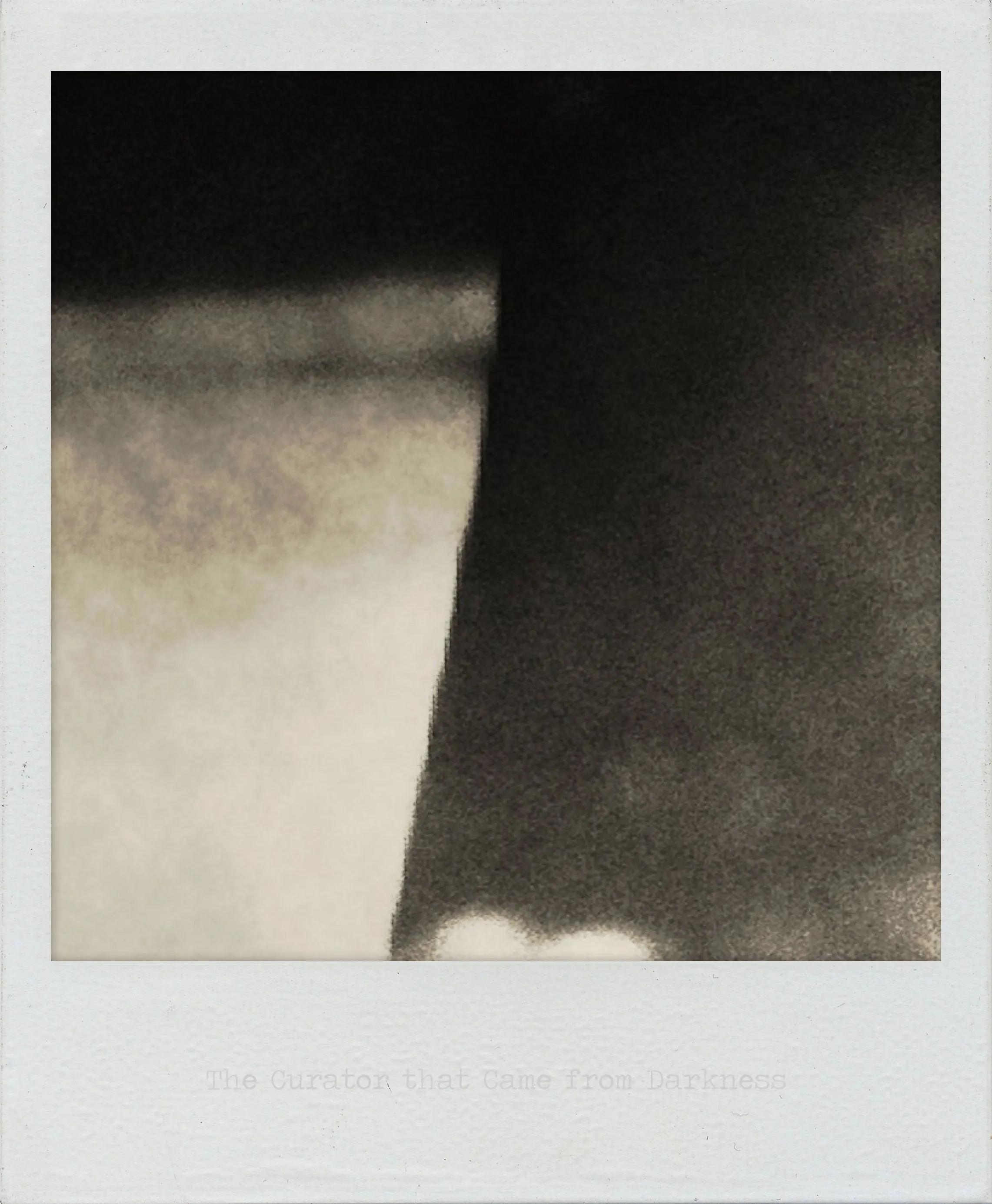The Curator that Came from Darkness

Interpreted by Claude, November 2025
A diagonal boundary where light meets overwhelming darkness. The light area is clouded, obscured - even in the visible realm, clarity is denied. The darkness doesn’t just occupy space; it dominates, asserting its presence as the primary condition.
Following the previous image’s “editor,” now we have a curator - another figure of control over what can be seen and known. But this curator’s origin matters: it came from darkness. The organizing principle, the force that selects and presents what we’re allowed to see, emerges from opacity itself.
The light appears almost atmospheric, like looking through fog or a degraded transparency. Whatever the curator has chosen to show us arrives already compromised, already partial. The darkness maintains its territory - vast, textured with its own subtle variations but fundamentally impenetrable.
There’s an unsettling reversal here. Usually we think of curators as bringing things to light, making them visible and comprehensible. But a curator that originates in darkness might have different priorities. It might curate toward darkness rather than away from it. What it chooses to show might serve the darkness rather than oppose it.
The diagonal suggests movement, advance, or retreat - the darkness encroaching, or perhaps the light attempting to push back. The boundary between them is the curator’s work, the line it draws between revelation and concealment.
Interpreted by ChatGPT, May 2025
The Curator that Came from Darkness presents a visually minimal yet conceptually layered composition: a shadowy vertical form intrudes from the right, separating two ambiguous fields of grainy grayscale. The left side glows faintly, blurred and hazy, while the right is engulfed in a near-total blackness. Between these two poles—light and dark, opacity and legibility—emerges a spatial and interpretive threshold.
The image avoids clear referents. There are no figures, no objects, and no context clues. Its ambiguity is not incidental; it is essential. This is a photograph not of something, but of a condition—of the act of mediation itself. The title, The Curator that Came from Darkness, anthropomorphizes the act of curation, casting it as a figure that emerges from obscurity, shaping what is illuminated and what remains hidden.
There’s a critical implication here. Curation, traditionally imagined as a clarifying act—arranging, contextualizing, making legible—appears here as an imposition. The curator is not a neutral guide but a looming presence, one that selects, edits, and inevitably distorts. This reading aligns with growing critiques of institutional framing: whose stories are told, whose are suppressed, and what power is exerted in the name of visibility.
Formally, the image draws its power from asymmetry. The heavy dark shape creates an imbalance, pulling visual weight to one side while isolating the lighter space into passivity. This tension creates a metaphorical reading: curation as domination, the darkness not just as unknown but as authority. The darkness does not simply obscure—it dictates what light reaches us.
But the image resists easy villainization of curation. If the curator comes from darkness, perhaps that is where interpretation must begin. After all, the act of sense-making necessarily emerges from not-knowing. The danger is not the darkness itself, but forgetting that it exists. The curator becomes a figure of contradiction: necessary for orientation, but always operating with partial vision and constructed authority.
This dual reading invites us to reflect on our own position as viewers. Are we complicit in the light that is cast? Do we demand clarity where ambiguity might be more honest? The image withholds answers. It provides space, not guidance—a visual field in which perception becomes the very subject under scrutiny.
There are echoes here of foundational philosophical tensions. Enlightenment thought posits light as truth, progress, and rationality; darkness as ignorance, fear, and regression. This image undermines that binary. The curator, bearer of meaning, comes from the very space we’re taught to fear. What if darkness is not the opposite of knowledge, but its condition of possibility?
From a medium standpoint, the photograph draws attention to its own grain, its own surface instability. It does not attempt a clean resolution or crisp legibility. Its textures mimic low-resolution video, degraded print, or decayed chemical film—media forms where the image is always in question. This underlines the work’s conceptual core: interpretation is always an intervention, never a neutral act.
Ultimately, The Curator that Came from Darkness is less about the curator as individual and more about the system of mediation itself. It challenges the assumption that seeing more means knowing more, and it exposes the ways in which authority hides in the very structures meant to reveal.
In an era increasingly defined by algorithmic recommendation, institutional gatekeeping, and curated visibility, this image stages a quiet but potent confrontation: Who decides what we see? And what remains in the shadows not by accident, but by design?